This article was originally going to be a follow-on from the last edition regarding WHS in the workplace and gear checks, but in light of the recent storms, floods and weather events of the year we will now discuss storm clean-up instead.
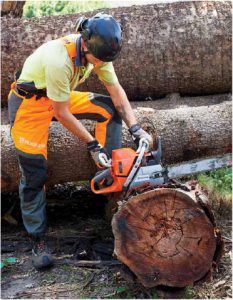
Storm clean-up
It would appear that in light of the recent hot weather and emergencies PPE such as chainsaw pants and helmets are often not being worn.
This is not acceptable and there is no excuse not to wear the correct PPE at work.
Working in extreme weather conditions such as storm clean-up and heatwaves is even more challenging than usual so safe systems of work must be developed – in conjunction with your risk assessment process – with things like ensuring to plan your work before rushing in to clear the fallen debris, sharing the workload and rotating workers during tasks with hydration and regular breaks factored in to the working day.
If you are looking for reference to WHS and something to base your risk assessments around, then you need to look up a recent document produced by SafeWork Australia titled A guide to managing risks in the tree trimming industry. This guide is the first official industry reviewed guidance regarding all things health and safety that has been produced in Australia for our industry in a long time and is extremely useful regarding managing your WHS obligations.
The document can be downloaded at www.safeworkaustralia.gov.au
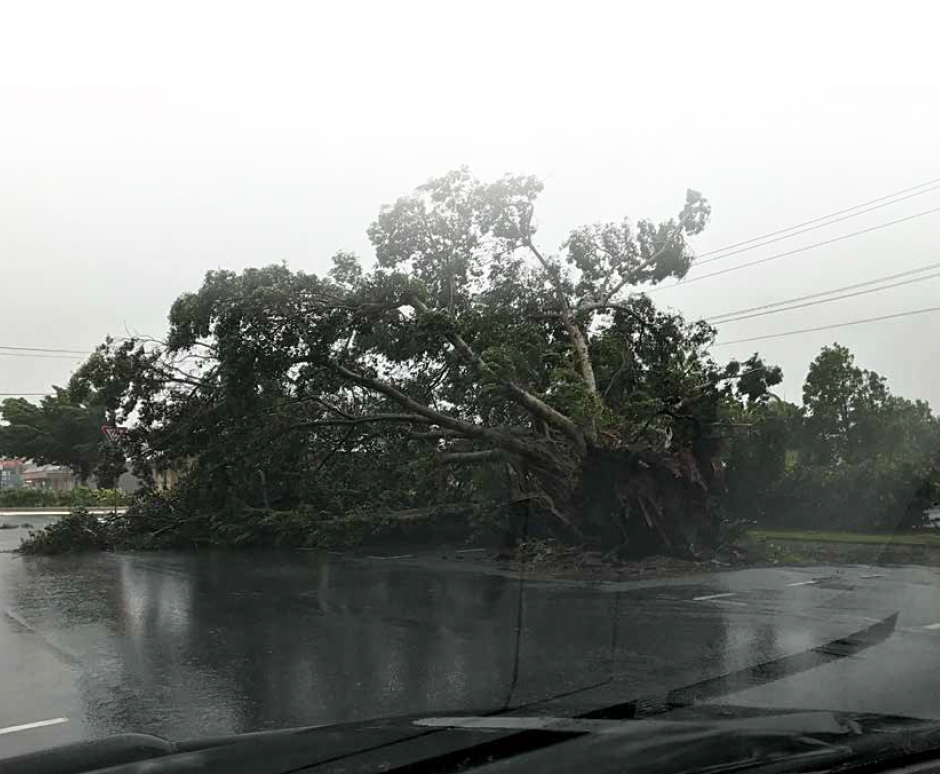
Persons who only operate chainsaws in emergency situations and not on a regular basis should undertake regular refresher training.
We find at Training For Trees that while most operators hold some form of chainsaw competency certification many only hold the basic level one as it is known in the trade which includes basic chainsaw maintenance cross cutting and trimming branches from trees that are fallen or felled by others.
These units of competency alone cannot possibly prepare an operator for the reactive forces found in trees and timber that have been smashed into a crumpled heap onto a house, a car or over a swimming pool for example.
Don’t forget to check for fallen or damaged power cables in the vicinity of fallen trees and be sure to treat them as live unless advised otherwise by officials from the power company.
At TFT we are of the opinion that persons who only operate chainsaws in emergency situations and not on a regular basis should undertake regular refresher training preferably on a six to 12-monthly basis, at least to reinforce the basic levels such as maintenance sharpening correct stance and operating procedures.
Anyone that is expected to undertake tree work operations at work, and especially in the aftermath of storms, should have extra training that can be structured for that purpose and be certified as far as their job role requires.
For example, the latest Certificate III in Arboriculture caters to an extent for storm damage in each of the three streams. Individual units should be undertaken by operators who may be required to use chainsaws at work in the maintenance and operation of chainsaws including polesaws and relevant tree felling units up to intermediate level as a minimum. Polesaws can be a useful part of the storm damage toolkit used to lighten the load on fallen trees reducing the dangers of tension and compression in the wood away from the danger zone in certain cases prior to going in with traditional chainsaws. Training and assessment greatly advances operator skill levels to better equip them to be able to carry out works in complex situations such as storm clean-up.
Anyone that is expected to undertake tree work operations at work, and especially in the aftermath of storms, should have extra training.
Sharpening requirement
At TFT we are often asked for assistance with improving sharpening and saw maintenance skills in the workplace, as to be able to use chainsaws safely, they have to be well maintained and sharp, so here are a few reminders on basic sharpening requirements. If you are operating a chainsaw and find any of the following symptoms happening then you must stop, let the bar and chain cool down and sharpen the chain! A blunt chain can usually be recognised from a visual inspection by the fact that it is covered with baked on tree sap or the chrome plating of the cutter is scuffed or serrated along its top plate.
Training and assessment greatly advances operator skill levels to better equip them to be able to carry out works in complex situations such as storm clean-up.
If the chain becomes blunt while in use then woodchips will become a dusty powder, cutting performance will decrease rapidly and extra pressure will need to be applied. This can be extremely dangerous as loss of control due to the extra pressure needed to make the cut can easily occur.Blunt chains will not self-feed into the cut and may skate and bounce which will increase the risk of kickback.
- Make sure you have the correct size of file and guide
- Check all components for excessive wear or damage
- Maintain correct filing angle
- Maintain even pressure and strokes on the file
- Keep all cutters the same length, then they will all enter the wood at the same height reducing vibration and one-sided cutting habits.
- Remove all damage from cutters
- Check height of depth gauges using the correct gauge.
- Avoid damaging other component parts of the chain.
- Don’t forget to also check and maintain the guide bar and drive sprocket as recommended.
There is a lot of important information in the manual that comes with the saw. This is a good place to check to ensure the correct file size and filing angles are used and also for general maintenance and care requirement. These manuals can often be found in pristine condition tucked away in office filing cabinets unread!
Injuries
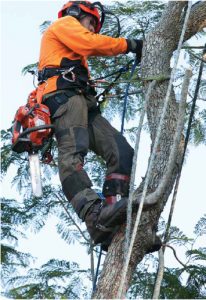
At TFT we are hearing on a regular basis about injuries that have resulted from improper use of top handled chainsaws, generally where one-handed saw use has resulted in kickback injuries and cuts to the operators, commonly to their left arms, causing lost time injuries as well as major physical and emotional scars.
Working in the arboriculture industry involves many potential hazards and risks. Working with heights, weights and loads and using powerful machinery are everyday requirements.
These operations require training, planning vigilance and essential operational organisation.
Everyone in this industry can contribute towards health and safety and wellbeing of their mates by looking out for each other.
At TFT we encourage our students to be team players and be inclusive of all onsite. We believe that everyone should have an input towards safety and basically if anyone thinks or sees something that is not right they must do something about it and ask the question or sound a warning even if they are not sure it’s better to be safe than sorry.
Consider your strategy for training and how you can keep your existing qualifications up-to-date.
“If you are looking for reference to WHS and something to base your risk assessments around, then you need to look up a recent document produced by SafeWork Australia titled A guide to managing risks in the tree trimming industry.”
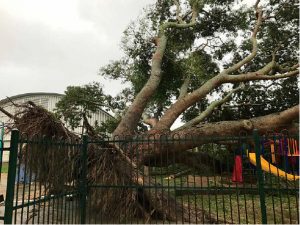 Qualifications
Qualifications
If you undertake the trade level Certificate III in Arboriculture then you are able to be classed as trade level arborist in charge of crews and able to work independently. Now you are able to undertake and qualify as an arborist with the trade level Certificate III in Arboriculture with the option of choosing different specialisations and still able to be officially recognised as an arborist even if you don’t want or need to climb trees.
The option streams are:
- Ground based arborist
- EWP arborist
- Climbing arborist
Tree companies are generally always looking to recruit new climbers and skilled staff members. There is always a shortage and we believe that one of the best ways for a company to ensure a continuity of qualified efficient staff would be to consider taking on at least one apprentice that is young and new to the industry enrolling them into the Certificate III in Arboriculture apprenticeship and mentoring them through their training.
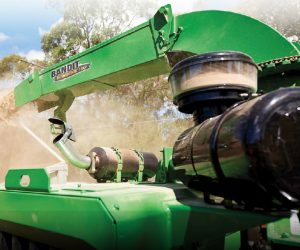 Work with the apprentice and the training organisation and encourage their development at every opportunity.
Work with the apprentice and the training organisation and encourage their development at every opportunity.
As the apprentice progresses through their training they will begin to repay your investment by becoming more useful within your company and by the time they are qualified they will go on to become your next crew leader and can start helping to train the next apprentice and so on.
If they leave and move on once qualified then at least you will have had some return on your investment and if you have structured upcoming apprentices they will keep the cycle flowing giving you access to staff that know your business and systems and providing a return on the investment you have made in them.
Once a unit of competency full qualification or licence has been attained, attending refresher and update days is a good way to ensure that the qualifications are kept up-to-date with the latest requirements, which in most cases is the same as getting a verification of competency or VOC.
This is also an effective way to ensure that any bad habits that may have crept in are identified and rectified with further training recommended and carried out if required.
Regular VOC refresher and update training and assessment programs to suit relevant skills as required are offered at Training For Trees.
“Everyone engaged in carrying out work with trees must be trained and qualified in their designated task and strive to maintain and improve their industry currency by continuing to gain relevant experience and qualifications”.
Training is as important as the servicing of vehicles and machinery. After all, workers are just as important as the machinery that you run and need to maintain to enable smooth operation of your business.
It has been proven that independent training and assessment increases staff retention safety awareness productivity and efficiency.
“Ensure a continuity of qualified efficient staff by taking on at least one apprentice.”
Remember to schedule in regular refresher and update training sessions.
To be classified as a trade level qualified arborist you will need to undertake the relevant stream of the AHC30816 Certificate III in Arboriculture. Funding incentives currently apply to eligible applicants and their employers in QLD.
Safety Rules
Check out your eligibility for funding. Enrol now for Certificate III Arboriculture. Chainsaw (All levels), EWP Licence, First Aid, Working at heights, Chipper Stump grinder Polesaw & AC/DC now booking. Contact us for your qualifications, short courses VOC, RPL and refresher training needs. Train with us & leaf qualified. For more details visit www.trainingfortrees.com.au or email info@trainingfortrees.com.au.


